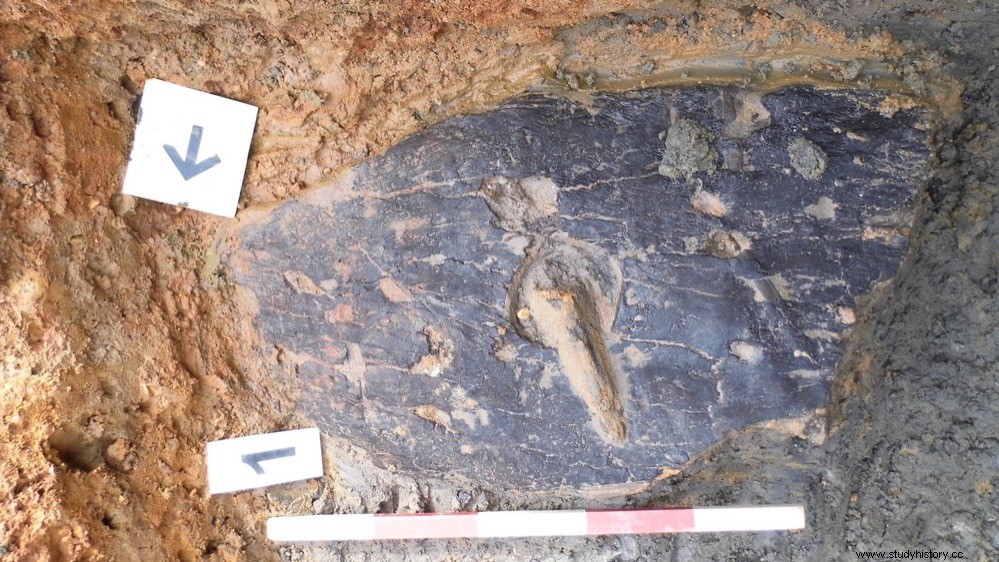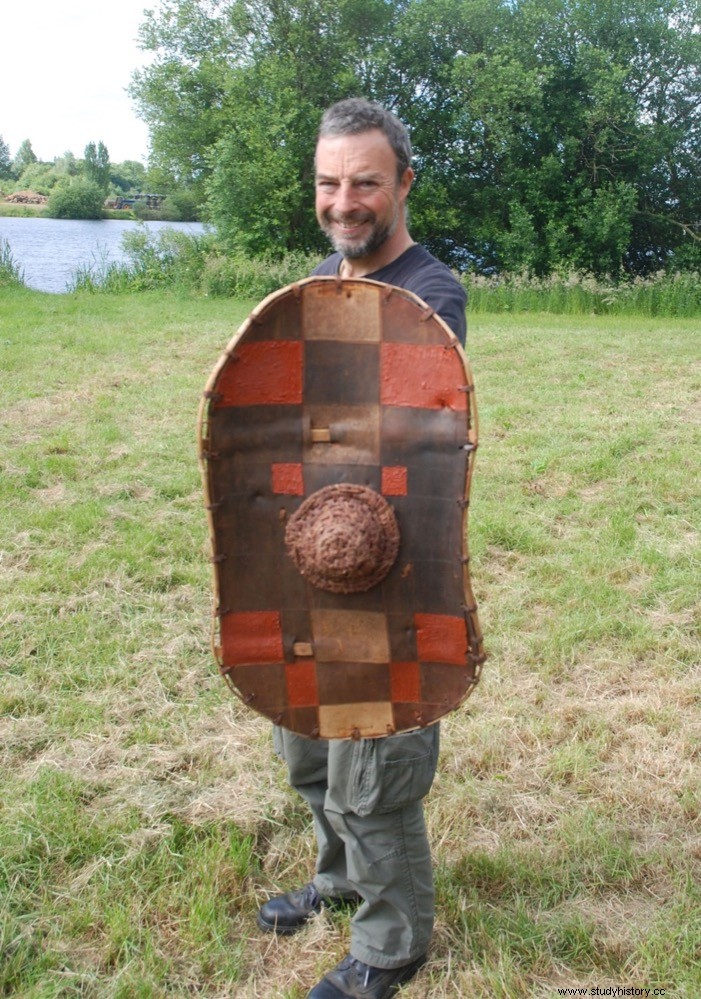A shield that was made from sheets of bark during the Iron Age has provided researchers with new insights into prehistoric construction, technology, and weaponry design.
The shield, the only one of its kind in Europe, was found south of Leicester at the Everards Meadows site, in what is believed to have been a watering hole for cattle.
After analysis of the shield's construction by Michael Bamforth at the University of York, it became apparent that it had been carefully crafted with sheets of bark to stiffen the structure, a wooden rim, and a cloth rim to protect the handle.

Although previous archaeological evidence shows that bark was used to make bowls and boxes in prehistoric times, this is the first time that researchers have found this material used for a weapon of war.
The outer part of the shield is painted and decorated with a red checkered pattern. Radiocarbon dating has revealed that the shield was made between 395 and 255 BC. (The Iron Age in the British Isles goes back to the Roman invasion of 43 AD)
The shield was severely damaged, probably from spear points. Investigators will conduct further analysis to determine if this occurred in battle or as an act of ritual destruction.

According to Michael Bamforth of the Department of Archeology at the University of York, this truly amazing and incomparable artifact has given us insights into prehistoric technology that we could never have guessed. Although we know that the bark has many uses, including making boxes and containers, it does not survive well in the archaeological record. At first we didn't think the bark would be strong enough to use as a shield to defend against spears and swords and wondered if it could be for ceremonial use. Only through experimentation did we realize that it could be hard enough to protect against hits from metal weapons. Although a bark shield is not as strong as one made of wood or metal, it would be much lighter allowing its wearer much more freedom of movement .
The shield was discovered by archaeologists from the University of Leicester in 2015 at an Iron Age site near the Via Fosse Roman road.
Many cutting-edge analytical techniques have been used to understand the construction of the object, including CT scanning and 3D printing. Experimental analysis showed that the shield would have worked very effectively, and its surface shows evidence of use.
The shield will be deposited in the British Museum. According to Julia Farley, Curator of the British and European Iron Age Collections at the British Museum, This is an absolutely phenomenal object, one of the most wonderful and internationally significant finds I have come across in my career. Bark and basketry objects were probably common in ancient Britain, but rarely survive, so to be able to study this shield is a great privilege. It has a rich source of information on Iron Age society and craft practices.
